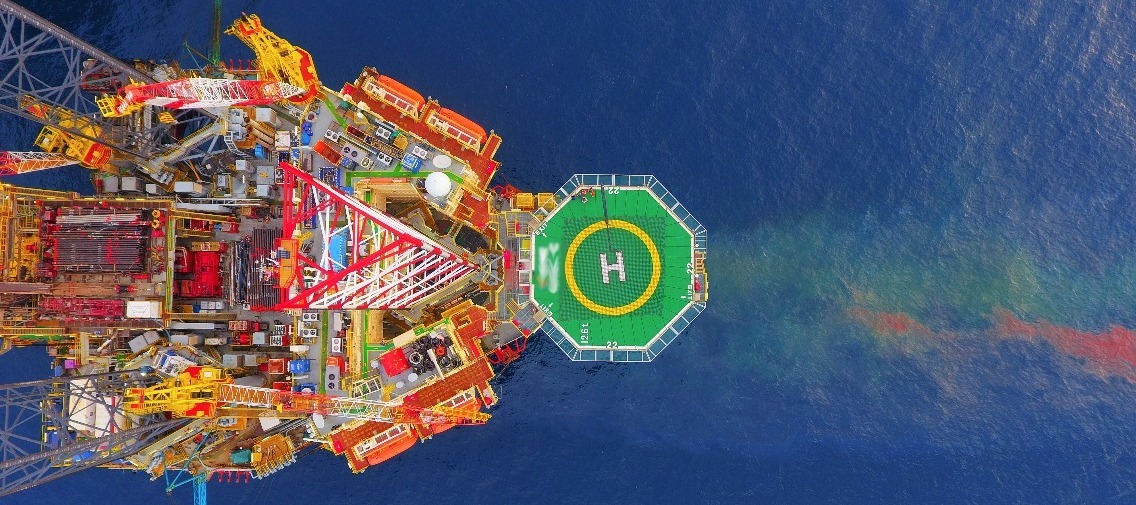IN SHORT
How Cognite’s products helped Aker BP set CO2 reduction goals
Aker BP used DataOps provided by Cognite, including Cognite Data Fusion, Asset Data Insight, and InField, to study the potential for reducing CO2 emissions at the Skarv field and improve interdisciplinary collaboration with easy access to data and 3D models.
Aker BP used data stored in Cognite Data Fusion (CDF) to study the impact of installing a steam turbine on the floating production, storage, and offloading (FPSO) unit serving the Skarv field.
The project will help Aker BP cut its CO2 emissions by 100,000 metric tons a year by 2025.
-
Reduced CO2 emissions
-
Improved planning processes
-
Reduced maintenance costs
CHALLENGE
Cutting CO2 emissions
Aker BP, one of Europe’s largest independent oil and gas operators, emitted 910,000 metric tons of carbon dioxide in 2017. The company has set an ambitious goal of reducing its CO2 emissions to less than 5 kilograms per barrel of oil equivalent from the current level of 7.6-8.1 kg starting in 2020. As part of reaching that goal, Aker BP is aiming to cut CO2 emissions at the Skarv field in the Norwegian Sea. The floating production, storage, and offloading (FPSO) unit at Skarv is powered by four gas turbines. Aker BP currently needs to run three of the four turbines on the FPSO to power its operations. By installing a steam turbine, Aker BP could power the FPSO with only two turbines, thereby significantly reducing emissions from burning gas.
SOLUTION
A larger study on how to reduce emissions
Aker BP’s engineers accessed data stored in Cognite Data Fusion in Asset Data Insight, Cognite’s flagship application for production optimization, to run initial time-to-completion and cost calculations on the steam turbine project. These calculations formed the basis for a larger study on how to reduce emissions at the Skarv field. The engineers also used InField, Cognite’s operations and maintenance application, to review photorealistic 3D models of the Skarv FPSO enriched with point cloud data to verify the placement of the steam turbine. Together, the applications helped create a common understanding across different groups within and outside Aker BP about the challenges and opportunities related to the project. The applications also reduced the need for offshore planning trips and improved communication between different teams within Aker BP, as all stakeholders could easily access and review the data and 3D models.
IMPACT
The project will help Aker BP cut its CO2 emissions by 100,000 metric tons a year by 2025
The data-driven study determined that the steam turbine project will enable Aker BP to cut CO2 emissions from the Skarv field by 100,000 metric tons a year by 2025 -- a major reduction that will help the company meet its sustainability goals. Asset Data Insight and InField helped Aker BP conduct the study more efficiently. Other than a weeklong trip to take photogrammetry images and collect point cloud data, the entire study was conducted without any offshore verification. This reduced the number of days spent offshore by about 60. Additionally, the steam turbine project will benefit Aker BP in a number of different ways:
The new steam turbine will be significantly more efficient, reducing maintenance costs by an estimated 30%. By reducing the number of gas turbines needed to power the Skarv FPSO from three to two, Aker BP can sell the gas that otherwise would have been burned to generate electricity. Finally, the photogrammetry images captured to enrich the 3D models of the Skarv FPSO will be reused for other projects and initiatives.


 Check the
documentation
Check the
documentation Ask the
Community
Ask the
Community Take a look
at
Academy
Take a look
at
Academy Cognite
Status
Page
Cognite
Status
Page Contact
Cognite Support
Contact
Cognite Support


